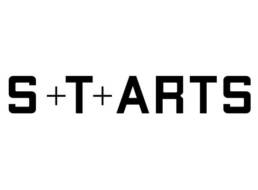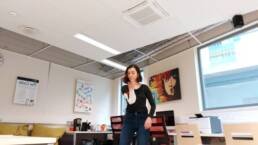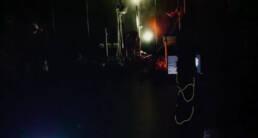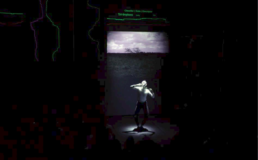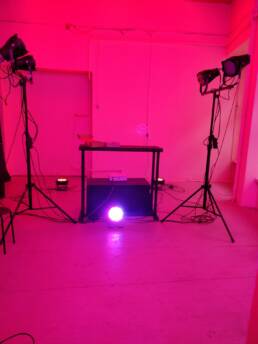STARTS.EE art+science residency
Call for Dance Artist and for Creative technologist
Topic: Creating visuals for dance with biosignals
About
STARTS.EE is an umbrella initiative promoting encounters between science, technology, and the arts, for the benefit of society. The goal of the initiative is to open up Tallinn University research and development activities to the outer world, strengthening its abilities and increasing societal and cultural impact.
Residencies, organised in collaboration with STARTS.EU and e⁻lektron, aim at kickstarting artistic and scientific or technological collaborations that lead to transdisciplinary novel ideas that enrich the existing practices of both domains.
A residency is a form of collaboration where an artist and a researcher or technologist can work together on interesting phenomena, led by curiosity and inspired by the exchanges that transcend the boundaries of the two domains. Art and science both have the ability to proceed to the unknown and make use of experimental approaches.
The residency provides a platform for collaboration that enables us to achieve a more complete and universal understanding of things.
Topic
Projected visuals on stage have become a common element in contemporary dance performances. But they are often used only as a decorative element, disconnected from dancers; or merely shadowing what the dancers are doing on stage. Recent dance and technology projects such as Moving Digits (www.movingdigits.eu) have highlighted the importance of adding layers of meaning to dance performances through visuals. For example, this can be done by using visuals to reveal the choreographic thinking behind the dance piece, or to reveal otherwise non-visible information from the body of the dancer (e.g. biosignal data).
STARTS.EE, art+science residency invites you to explore the use of biosignal data to create visuals in contemporary dance performance.
Goal
The goal of the project is to design a system that can collect biosignal data from the dancer, and use that data to generate visuals in a dance performance scenario.
For example, biosignals such as muscle data (through EMG), heart rate (through ECG) and valence/arousal (through EDA) can be used to communicate the inner states of the dancer. These sensors are now widely available (also at the HCI group, TLU), and can be easy to implement in these scenarios. The resulting data can then be used to generate visuals, therefore creating more holistic experiences – where the dancer can communicate not just with his body movement, but also with the inner aspects of the body through those visuals. This can be particularly useful for dancers exploring somatic practices, and interested in the communication of somatic impressions with the aid of technology.
The outcomes of the project should include the working prototype and the protocol of the study where this prototype can be tested in a semi-controlled or in-situ environment. Ideally, the piloting of the study should be completed as well, including a public showing.
What do we expect?
Availability. Your time and motivation to collaborate with an assigned residency partner on the proposed topic. The expected workload of the resident is ~160 h (i.e. equal to one month of full-time work). That workload can be stretched over a three-month period (i.e. maximum duration), starting at the end of October beginning of November 2021. The residents are expected to be physically present in Tallinn for the collaboration period and work face to face in the university premises if it is considered safe regarding the ongoing public health crisis.
Curiosity to explore the proposed topic on equal grounds with your residency partner, aiming for transdisciplinary collaboration where new knowledge is created for both participants.
Technical skills. From the Creative technologist, we expect technical skills such as signal processing knowledge, machine learning, and graphics programming. A basic level of technical skills will also benefit the artist applicant.
Documentation. The residency is a part of a research project and participants will be asked to provide regular feedback about the process for research purposes (in the format of diaries, interviews, workshops). The collaboration will also be documented for dissemination in (social)media (e.g. photos, videos, short interviews).
What do we offer
Budget
Residency salary of 1500€ (brutto) for both participants and an additional 500€ for materials, tools, etc.
Space
Residents will be provided with a working space in the interaction design lab on the Tallinn University campus.
Equipment
Residents will be able to use the equipment in different labs of Tallinn University, including materials for physical prototyping, a wide variety of sensors, software, and hardware.
Mentoring
The participants will be supported by a diverse team of experienced mentors, with backgrounds in physiological computing, neurofeedback, and smart textile technologies as well as performing arts and design.
Toolkit for co-creation
The residency process will be supported by a customised set of co-creation techniques to facilitate creative collaboration. The toolkit will help participants to collaborate on equal grounds, working towards a shared vision.
Labs and Facilities
Explore →
Who can apply
We are looking for Dance Artist and for Creative Technologist to collaborate on the topic of Creating visuals for dance with biosignals. The applicants are expected to apply for the residency position individually. The selected applicants will later form a two-person team working together to explore the proposed topic.
How to apply
Send a motivation letter (up to 1 page A4) explaining your interest in the residency collaboration and a link to your artistic or Creative Technologist portfolio + CV by October 29th, 2021 to hci@tlu.ee.
The selected participants will be announced by October 30. The residency is expected to start in November. The exact timeline will be agreed upon with the participants, taking into account their availability.
For further enquiries contact hci@tlu.ee.
Researcher of the project Nuno Correia : nuno@tlu.ee


